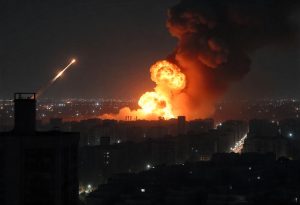Thursday, July 17, 2025
Ecuador now unifies in crisis with the UK, Lebanon, Nigeria, and Greece in facing water shortages—travel may be affected, and here are new updates you need to know. This brewing story is urgent and far-reaching. Ecuador’s taps are running dry. The UK reels from its own shortage. Lebanon struggles next, and Nigeria follows. Greece joins the list. Travel may be affected as flight services, resort stays, and cruise itineraries adapt.
New updates you need to know are unfolding fast.
Stay with us. Curious which destinations are hit hardest?
Wondering how travel plans could unravel?
Read on for the full story.
Desperation is gripping Ecuador’s capital as Quito grapples with its worst water shortage in a quarter century. More than 400,000 residents are caught in a mounting crisis after a landslide crippled a major pipeline, cutting water to vast southern districts of the city. With buckets and plastic basins in hand, locals queue along streets for scarce tanker deliveries, as the travel and tourism industry braces for ripple effects.
The disruption couldn’t come at a worse time for Ecuador’s tourism sector, which has been pushing for a stronger rebound after pandemic-era lows. The shortage is forcing travelers and locals alike to endure restricted services in hotels, restaurants, and attractions dependent on reliable water supplies. Reports from the Chillogallo neighborhood describe elderly residents waiting hours in the heat without knowing if water will arrive. This grim scene is replaying in several southern districts, where emergency tankers are spread too thin to meet demand.
Southern Quito, home to guesthouses, hostels, and tour operators catering to domestic and international travelers, is now facing potential cancellations and loss of business. Many properties lack stored reserves to manage a crisis of this scale. Hotels are rationing water for showers, cleaning, and kitchens, while some restaurants have cut hours or shuttered completely, unwilling to operate under sanitation risks.
Local tourism authorities worry about the impact on visitor confidence and the city’s brand as a safe, modern destination. The shortage has already forced tour operators to adjust itineraries, steering visitors away from affected zones and toward northern districts or nearby towns with stable services. Meanwhile, businesses reliant on construction and renovations — including hotel refurbishments and tourism infrastructure — have come to a halt, lacking water for essential tasks like mixing cement.
Public health fears are climbing as residents resort to untreated water sources. In the Nueva Aurora neighborhood, people are gathering at springs that fail to meet safety standards. Residents walk or haul carts loaded with containers to collect water, a sight now common across southern Quito. Even travelers seeking “off-the-beaten-path” experiences may risk exposure to unsanitary conditions, raising concerns for tour operators focused on safety assurances.
The government has deployed the first portable water treatment plants to prevent illness outbreaks, but access remains limited. Vulnerable groups, particularly older adults, face the harshest consequences, struggling to carry heavy water loads and lacking family support.
Amid the logistical nightmare, political tensions are brewing between Quito’s municipal government and national authorities. While Mayor Pabel Muñoz insists the city is working around the clock to clear debris and restore pipelines, national officials accuse local leaders of failing to communicate crisis plans. Vice President María José Pinto and national emergency teams have stepped in, setting up portable water purification plants and coordinating tanker deployments from other cities.
These clashes raise concerns over coordinated crisis management, which is crucial not only for residents but also for Ecuador’s broader economic stability. Tourism stakeholders warn that prolonged uncertainty could damage Ecuador’s reputation and stall the fragile growth seen in recent quarters.
Water is life—and increasingly, it’s also becoming a deciding factor in where travelers choose to go, how destinations operate, and whether tourism businesses can thrive. From the rolling hills of England to the sunbaked plains of Zambia, a global water crisis is reshaping the travel map in real time. For travelers, tour operators, and hospitality brands alike, understanding these shifts isn’t just helpful—it’s critical.
The global water crisis is not a sudden phenomenon but the result of long-simmering pressures colliding all at once. Climate change has turbocharged droughts and heatwaves, leading to prolonged dry seasons and vanishing glaciers that once fed rivers crucial for human settlements.
At the same time, many countries’ water infrastructures are aging or poorly maintained. Leaks, contamination, and outdated systems waste staggering amounts of water before it ever reaches taps. Political disputes compound the situation as transboundary rivers become flashpoints for diplomatic tension. Layer on booming populations and urbanization, and the stress becomes unbearable.
All this has pushed regions across the globe—from advanced economies like the UK to developing nations like Zambia—to the brink. For the tourism industry, it’s a crisis hitting at the very heart of operations.
Few would associate England with water scarcity. Yet the UK is now enduring its driest spring in over a decade, with reservoir levels in southern regions hitting just 76% capacity, the lowest in ten years. Hosepipe bans are impacting more than 8.5 million people across counties like Hampshire, Isle of Wight, Sussex, Kent, Gloucestershire, Oxfordshire, Berkshire, and Wiltshire.
For the tourism sector, these bans and low water levels create significant hurdles. Hotels and B&Bs must ration water usage, often asking guests to limit showers and towel changes. Iconic destinations in southern England are also facing challenges maintaining lush gardens and historical sites that depend on irrigation for their aesthetic appeal. Gardens like those at stately homes, crucial attractions for domestic and international visitors, risk turning brown under the scorching sun.
Beyond aesthetics, water restrictions have practical implications. Tour companies offering river cruises or outdoor activities now factor water levels into planning. Angling tourism, a surprisingly significant niche market, faces disruptions as river habitats shrink.
As climate models predict more frequent droughts for the UK, destinations must innovate rapidly, introducing rainwater harvesting systems, low-flow plumbing, and sustainable landscaping. England’s green brand identity might depend on it.
Lebanon has entered uncharted territory as Lake Qaraoun—the nation’s largest reservoir—shrivels under the worst drought on record. Inflows that normally reach 350 million cubic meters have plummeted to just 45 million. The consequences are severe: hydroelectric plants are idle, agricultural lands are parched, and entire communities are relying on unsafe water sources.
For Lebanon’s tourism industry, water shortages strike at a critical juncture. After years of economic instability and political upheaval, the country was inching toward a tourism revival, showcasing its mountain resorts, coastal cities, and renowned culinary scene. However, travelers are increasingly wary of visiting destinations where even basic services might falter.
Hotel operators report rationing water for showers and kitchen operations. Tour companies face cancellations from groups hesitant to risk an adventure vacation in a country rationing drinking water. Cultural attractions and heritage sites struggle with maintenance as water becomes a luxury commodity.
Looking ahead, Lebanon’s tourism stakeholders must build resilience. Strategies might include water recycling, desalination efforts, and better storage infrastructure to ensure consistent services even during drought periods.
Pakistan, home to spectacular mountain vistas and cultural treasures, finds itself on the brink of water catastrophe. The Indus, Jhelum, and Chenab rivers—lifelines for agriculture and domestic use—are flowing at historic lows due to delayed monsoon rains and geopolitical tensions with neighboring India.
This crisis poses enormous risks for tourism. Northern Pakistan, a popular trekking and adventure destination, depends on rivers not just for drinking water but for supporting ecosystems, agricultural landscapes, and scenic beauty that draw travelers. With rivers reduced to trickles, landscapes change dramatically, sometimes becoming barren and dusty, dampening their appeal.
Moreover, water scarcity threatens health and sanitation, deterring travelers worried about hygiene standards. Hotels in cities like Lahore, Islamabad, and Karachi are already implementing water conservation measures, which sometimes means restricting amenities like pools or spa services.
Tour operators are under pressure to revise itineraries to avoid heavily impacted areas, and adventure tourism companies are facing uncertainty about river-based activities like rafting. Even religious tourism could take a hit, as pilgrims reconsider trips to major shrines if water remains scarce.
Addressing Pakistan’s water woes will require substantial investments in modern irrigation systems, urban water recycling, and international cooperation over shared water resources. For tourism to recover fully, water security must become part of the national strategy.
Nigeria’s northwest is drying up at alarming speed. Rivers are receding, wells are running dry, and 31 million people face water insecurity—a crisis with far-reaching consequences for food security and public health.
Though Nigeria is better known for its oil sector than tourism, destinations like Lagos, Abuja, and eco-tourism spots in Cross River State have been gradually carving out a tourism niche. Water shortages threaten to derail this progress. Tourists increasingly seek assurances of hygiene, clean drinking water, and functional sanitation—all at risk when water is scarce.
Hotels are installing boreholes at great expense, while resorts in remote regions find it harder to guarantee basic services. Rising water costs are cutting into already thin profit margins for hospitality businesses, which must either absorb the expense or pass it onto guests.
Long-term solutions include infrastructure modernization and rainwater harvesting systems, which could ensure hospitality and tourism businesses can continue operations sustainably even during prolonged droughts.
Greece remains a dream destination for travelers worldwide, but southern regions like Argolida are grappling with severe water shortages. Infrastructure leaks and years of drought mean some communities are being told not to drink tap water due to salinity intrusion—a stark problem for a tourism-dependent economy.
Hotels, especially in traditional villages and boutique properties, face steep challenges. Many rely on municipal water networks that cannot guarantee consistent supply. Tour operators are adjusting packages to ensure guests don’t visit regions where water scarcity disrupts basic services.
Water has become both a practical necessity and a marketing concern. Greece’s tourism brand is built on sun-soaked beaches, vibrant landscapes, and lush islands—an image hard to maintain when greenery browns and water restrictions hit.
The Greek government and tourism industry are rolling out water conservation programs and exploring desalination technologies. But as tourists grow more conscious of sustainability, water security is likely to become a major consideration in travel decisions.
Iran is among the world’s most water-stressed nations, using up nearly all its renewable water resources annually. Major cities like Tehran, Isfahan, and Mashhad are grappling with strict rationing, aging pipelines, and vanishing aquifers.
For Iran’s tourism sector—already hampered by geopolitical issues—water scarcity represents a formidable barrier to recovery and growth. Attractions like gardens in Shiraz, historical bathhouses, and even desert tourism ventures depend on access to water for maintenance and visitor comfort.
Travelers, particularly those interested in cultural heritage or nature-based experiences, may hesitate to visit if they perceive sanitation risks or degraded landscapes. Hospitality businesses face increased costs as they invest in water-saving fixtures, greywater systems, and emergency supplies.
Iran’s water crisis underlines how even destinations with rich cultural appeal cannot overlook basic resources as part of tourism planning.
Zambia has just endured its worst drought in two decades, leaving dams dry and rivers at historic lows. Agriculture has suffered immensely, electricity cuts have spread due to the country’s dependence on hydropower, and water rationing is now a fact of life.
For Zambia’s growing tourism industry, the implications are significant. Iconic sites like Victoria Falls are directly tied to river flows, with the falls sometimes reduced to a trickle during dry seasons. Such shifts damage Zambia’s tourism brand, which hinges on awe-inspiring natural spectacles.
Safari operators also rely on water sources to sustain wildlife. In drought periods, animal populations migrate unpredictably, making wildlife sightings less reliable and potentially reducing visitor satisfaction.
The hospitality sector is investing in boreholes, water tanks, and conservation practices, but these come at high costs. Tourism stakeholders are advocating for regional cooperation to safeguard shared water resources like the Zambezi River.
Few places illustrate the collision of conflict and environmental collapse like Yemen. Groundwater in the capital, Sana’a, is dropping by up to six meters per year, while over 16 million people lack access to safe water. Conflict has destroyed infrastructure, and qat farming continues to consume precious water supplies.
While Yemen has a rich cultural and historical heritage, including sites like Shibam and the old city of Sana’a, tourism is essentially nonexistent under current conditions. Even if peace arrives, rebuilding the tourism sector will be impossible without addressing the country’s extreme water crisis.
For the global travel industry, Yemen serves as a stark warning: without sustainable water management, even the most culturally significant destinations can become inaccessible.
Across continents, water scarcity is shaping travel in profound ways. It’s altering the natural beauty travelers seek, disrupting operations for hotels and tour operators, and forcing destinations to rethink how they market themselves in a world increasingly conscious of sustainability.
The economic stakes are high. The travel industry accounts for roughly 10% of global GDP and millions of jobs worldwide. Water shortages threaten to undermine this sector, with cascading impacts on local economies dependent on tourism dollars.
Yet there’s hope. Technology offers solutions—from desalination plants in Greece to smart water networks in the UK. Destinations willing to invest in modern infrastructure, conservation efforts, and clear communication with travelers stand the best chance of weathering the crisis.
For travelers, the message is clear: water scarcity is no longer an abstract environmental concern. It’s shaping the routes we take, the places we stay, and the experiences we cherish. Sustainable travel, once a niche concern, is now an urgent necessity.
Travel professionals are advised to keep close watch on Quito’s evolving situation. Airlines may face last-minute passenger rebookings as visitors rethink trips to affected areas. Tour companies should revise schedules to avoid southern districts until full water service resumes. Hotels and DMCs should maintain transparent communication with clients, ensuring travelers understand the challenges and available alternatives.
Quito’s mayor expects water to return by Sunday, yet with only 77% of debris removed and political disputes lingering, timelines remain uncertain. The crisis serves as a sharp reminder of how swiftly natural events can disrupt urban life and the travel economy, and underscores the need for robust emergency plans across tourism supply chains.
As Ecuador works to restore water to its bustling capital, the tourism sector faces a test of resilience and adaptability. The outcome could define traveler confidence in this Andean destination for months ahead.




